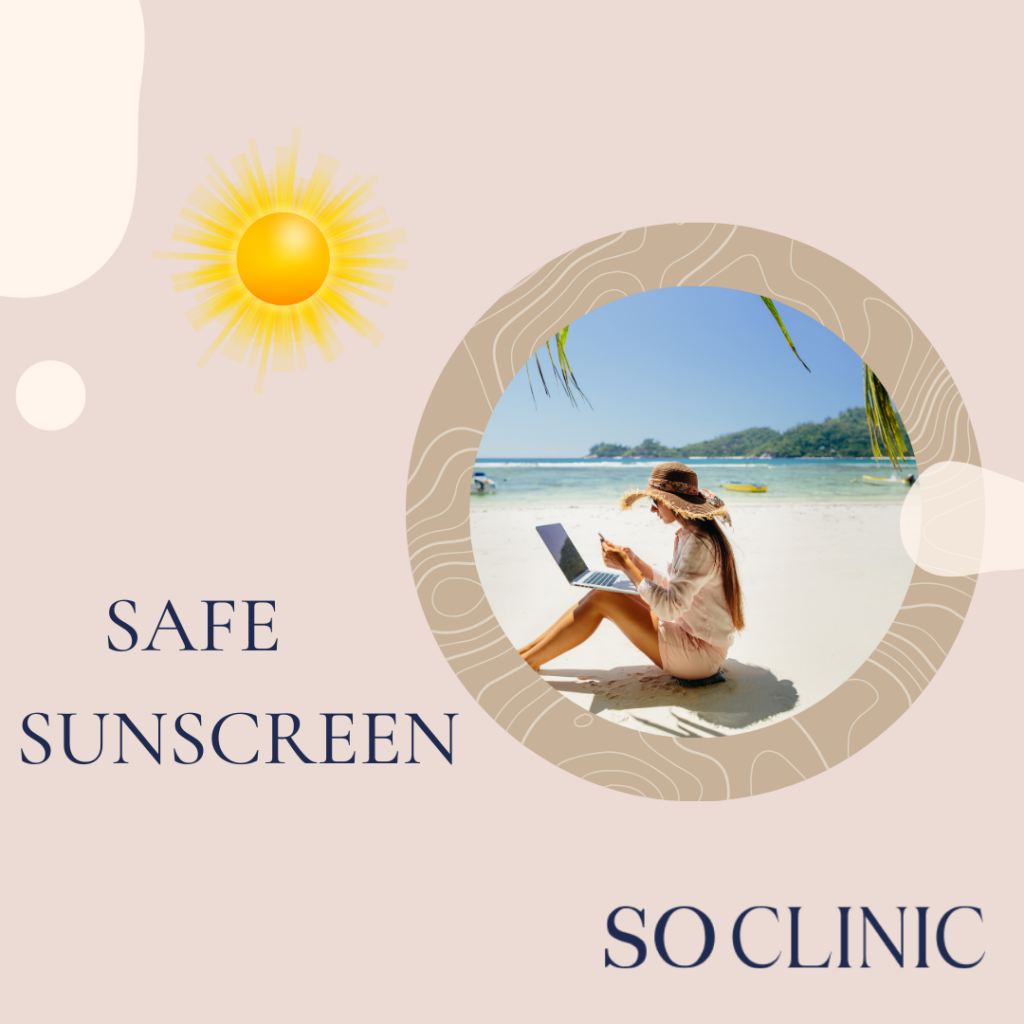
Should we use sunscreen?
As we finally head into sunnier days, I’m often asked: “Do we really need to use sunscreen every day?” The short answer is yes, but there are important guidelines and exceptions to consider to protect your skin without compromising your health. Sun protection has grown into a multi-million-dollar industry within skincare, so it’s essential to understand how to use it effectively and safely.
As a Nutritional Therapist specialising in skin health, I’ve conducted extensive research on sunscreens, reviewing hundreds of studies. My conclusion is that while it’s beneficial to spend at least 20 minutes in the sun daily without sunscreen or clothing—this isn’t just for Vitamin D, but also for supporting eye health and regulating your circadian rhythm—there are times when sun protection is essential. If you’re spending the entire day outdoors or are on holiday, it’s important to protect your skin from harmful UV rays to prevent sunburn and reduce the risk of skin cancer.
While sunlight has many benefits, understanding how to stay safe in sunny destinations is key, especially during long exposures. Ensure that you’re mindful of the time of day you’re exposing yourself to the sun. It’s best to avoid being in direct sunlight during the strongest UV radiation hours, which are between 11 am and 4 pm. If you need to be in the sun during these hours, seek shade and cover up rather than relying solely on sunscreen to avoid putting yourself, your children, and the environment at risk.
Let’s break down what sunscreens are supposed to do. There are two main types of UV rays that sunscreen helps shield against:
- UVA Rays: These penetrate deep into the skin, contributing to premature aging, wrinkles, and long-term skin damage.
- UVB Rays: These affect the outer layer of the skin and are the primary cause of sunburn.
For optimal protection, it’s important to use a broad-spectrum sunscreen that defends against both UVA and UVB rays.
Harmful Ingredients in Sunscreens
While the benefits of sunscreen are clear, it’s essential to be aware of certain ingredients that may be harmful to your health or the environment. Some ingredients in SPF (Sun Protection Factor) creams can undergo chemical changes when exposed to sunlight and have the potential for toxicity after sun exposure.
For example:
Oxybenzone is a common chemical filter in sunscreens that absorbs UV radiation.
Potential risks: This ingredient has been linked to hormone disruption and allergic skin reactions. Studies suggest that oxybenzone can be absorbed through the skin and may affect hormone levels, especially in children. It’s also harmful to coral reefs, contributing to coral bleaching and ecosystem damage. It can degrade when exposed to sunlight, leading to the formation of free radicals. Free radicals are unstable molecules that can damage skin cells, contributing to ageing and potentially increasing the risk of skin cancer. The degradation of these chemicals can also decrease the sunscreen’s SPF, reducing its ability to protect the skin from UV radiation.
Octinoxate is another chemical UV filter that protects against UVB rays.
Potential risks: Similar to oxybenzone, octinoxate has been associated with hormone disruption. It may affect thyroid function and has been found in human breast milk, raising concerns about its safety. Additionally, octinoxate is also harmful to marine life, particularly coral reefs.
Parabens are preservatives that prevent the growth of bacteria and mould in sunscreen products.
Potential risks: Parabens can mimic estrogen in the body, potentially leading to hormone imbalances. They have been detected in breast cancer tissue, raising concerns about their long-term safety.
Phthalates are often used to make the texture of sunscreens more appealing and to help the product adhere to the skin.
Potential risks: Phthalates have been linked to reproductive and developmental issues. They can disrupt the endocrine system, potentially leading to hormonal imbalances and fertility problems.
Reactive Oxygen Species (ROS)
Some studies have shown that certain chemical filters in sunscreen can generate reactive oxygen species (ROS) when exposed to UV light. ROS are highly reactive molecules that can cause oxidative stress, leading to DNA damage, inflammation, and an increased risk of skin ageing and cancer. Ingredients like avobenzone and octocrylene have been implicated in ROS formation under sun exposure. Do you believe it – the very thing meant to protect you—sunscreen—could potentially contribute to cancer?
Safer Alternatives: Mineral Sunscreens
For those looking to avoid potentially harmful chemical ingredients, mineral sunscreens are a safer alternative. These sunscreens use physical blockers like zinc oxide and titanium dioxide to reflect UV rays away from the skin, rather than absorbing them.
- Zinc Oxide: Provides broad-spectrum protection against both UVA and UVB rays. It is gentle on the skin, making it suitable for sensitive skin and children.
- Titanium Dioxide: Also offers broad-spectrum protection and is less likely to cause skin irritation compared to chemical sunscreens.
Mineral sunscreens are generally considered safer for both human health and the environment, as they do not contain the harmful chemicals. Remember to check for the words “non-nano” because this indicates that the cream won’t be absorbed into your skin and body. Another important factor that affects how long sunscreen lasts is how much of the cream you are using. The recommended amount of sunscreen is 1/3 to 1/4 tablespoons for the face and two tablespoons for the body. According to a review of available data, applying twice as much sunscreen as the recommended amount is necessary for optimal protection.
Safe sunscreen for the face:
Sunscreens for body
Childrens sunscreens
Stay up-to-date with our latest news and exclusive offers! Sign up for our newsletter here.